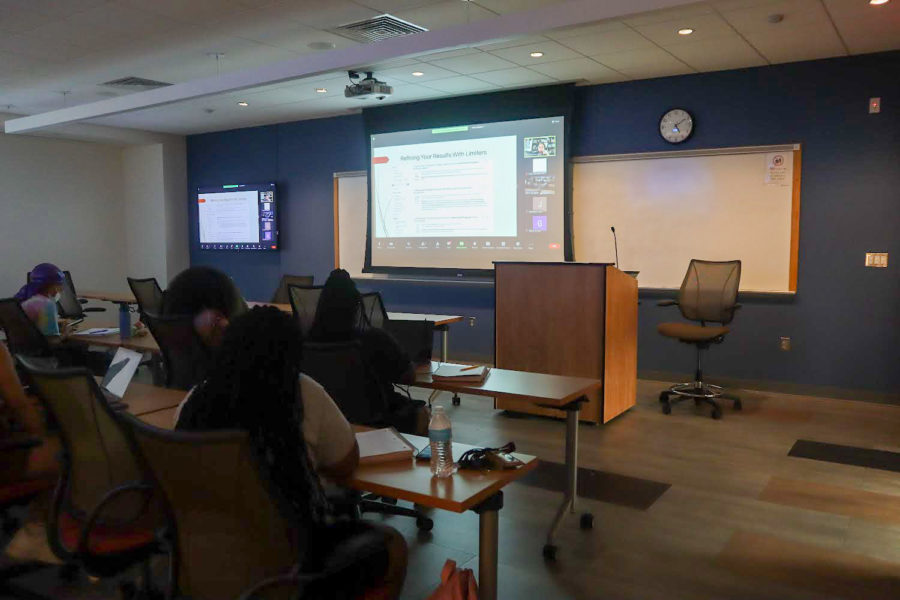University adapts to issues with Morgan Flex implementation
The university introduced a remote instruction option that allows students to attend classes online. However, the lack of technologically advanced classrooms has posed a problem.
Students can choose to stream their classes with the Morgan Flex option. However, not every course is eligible for the instructional modality.
September 15, 2021
As the first month of school comes to a close, the return campus has not gone as smoothly as hoped. Morgan State University introduced Morgan Flex at the start of the semester so that students may tune in online as an alternative to in-class learning.
Students who chose the Morgan Flex option must remotely stream their class during its regularly scheduled time.
However, not every course is eligible for the instructional modality, nor are all classrooms ready for this setup.
According to Karen Rubinstein, director of academic technology services in the division of Information Technology, there were 119 rooms equipped with an interactive board for Phase One and Two of Morgan Flex.
“There are an additional 100 classrooms scheduled to be completed by January 2022 for Phase Three,” said Rubinstein.
However, a majority of the classrooms were not prepared for Morgan Flex. Some classrooms in Holmes Hall became unavailable at the start of the semester because they were too small for the influx of students taking the course. Other classrooms had infrastructure issues that were uninhabitable for professors to teach in.
Anna McPhatter, dean of the School of Social Work, confirmed that there are some classrooms offline due to unforeseen events.
Due to the lack of classroom availability, Provost Hongtao Yu and President David Wilson approved a remote instructional option for classes previously approved as face-to-face or Morgan Flex to combat this problem.
All students in those courses had to consent to transfer to the remote option for the fall semester before the course could switch to virtual instruction.
In regard to overcrowded classrooms, McPhatter said, “we are currently collaborating with the Classroom Scheduling Unit to locate appropriate classrooms for all classes that need larger spaces. This issue is being addressed and expected to be resolved early this week.”
If a student needs to take a class virtually and the Morgan Flex or web option is not offered, students should contact their academic advisor or academic department to seek accommodations.
In the case of students contracting COVID-19 while attending face-to-face learning, they should contact Student Disability Services to request accommodations while ill. They should also contact student affairs, who will notify their professors of the illness, explained Kara Turner, vice president for enrollment management and student success.
For more information, students should visit Morgan’s website under Coronavirus Information, where a detailed list of facts regarding the eligibility of Morgan Flex classes is available.












